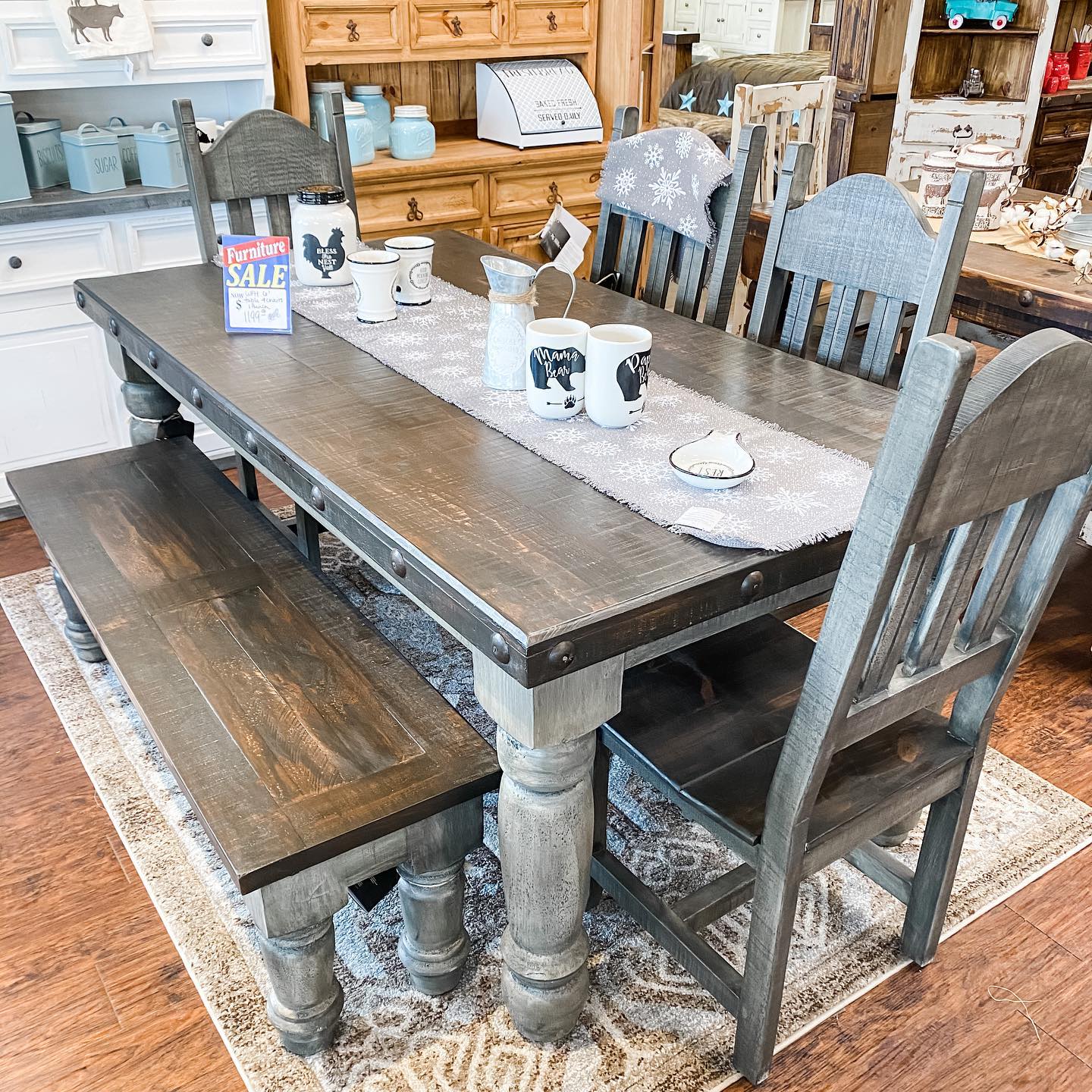The Heart of the Home: A Deep Dive into the Farmhouse kitchen Table
The farmhouse kitchen table. It’s more than just a piece of furniture; it’s the heart of the home, a gathering place where families share meals, stories, laughter, and tears. It’s where homework is done, bills are paid, and friendships are forged over steaming cups of coffee. This seemingly simple piece of furniture holds a wealth of history and tradition, evolving over centuries to become the beloved centerpiece of countless homes.
A History of Hearth and Home
The farmhouse table’s origins can be traced back to the simple, functional tables of early farming communities. These tables were built for practicality, crafted from readily available materials like wood and designed to withstand the wear and tear of daily life. They were large and sturdy, capable of accommodating large families and the abundance of food produced on the farm.

Over time, the farmhouse table evolved, reflecting changing styles and needs. As families grew more prosperous, tables became more ornate, featuring intricate carvings and finer materials. However, the core values of functionality and durability remained, ensuring that the farmhouse table continued to be a reliable and cherished piece of furniture.
The Enduring Appeal of the Farmhouse Table
Today, the farmhouse table enjoys a resurgence in popularity, gracing the pages of home decor magazines and finding a place in homes of all styles. Its enduring appeal lies in its ability to evoke a sense of warmth, comfort, and nostalgia. It represents a simpler time, a connection to the past, and a reminder of the importance of family and community.
The farmhouse table’s versatility also contributes to its popularity. It can be dressed up or down, fitting seamlessly into both formal and informal dining spaces. Its large size makes it ideal for entertaining, while its sturdy construction ensures it can handle the rigors of everyday use.

Choosing the Perfect Farmhouse Table
With so many options available, choosing the perfect farmhouse table can feel overwhelming. However, by considering a few key factors, you can find a table that meets your needs and complements your home’s style.
Size and Shape
The size and shape of your farmhouse table will depend on the size of your space and the number of people you need to seat. Consider how much room you have available and how many people typically gather around your table. Farmhouse tables come in a variety of shapes, including rectangular, square, round, and oval.
Material
Farmhouse tables are typically made from wood, but you may also find options made from other materials, such as metal or stone. Wood is a classic choice, offering warmth and durability. Consider the type of wood that best suits your style and budget. Popular choices include pine, oak, maple, and walnut.
Style
While all farmhouse tables share a common heritage, they can vary significantly in style. Some tables are rustic and distressed, while others are more refined and elegant. Consider the overall style of your home and choose a table that complements your existing decor.
Features
Some farmhouse tables come with additional features, such as drawers or leaves. Drawers can provide extra storage space for linens or cutlery, while leaves can extend the table’s surface area to accommodate more guests. Consider whether these features are important to you.
Caring for Your Farmhouse Table
To ensure your farmhouse table lasts for generations, proper care is essential. Regular cleaning and maintenance will help protect the wood and keep your table looking its best.
Cleaning
Wipe your table down regularly with a damp cloth to remove dust and spills. Avoid using harsh chemicals or abrasive cleaners, as these can damage the wood’s finish. For more stubborn stains, use a mild soap solution and a soft cloth.
Protecting
Use coasters and placemats to protect your table from water rings and heat damage. Consider using a tablecloth or table runner to protect the surface from scratches and spills.
Maintaining
Periodically, you may need to refinish or touch up the finish on your farmhouse table. This will help restore the wood’s luster and protect it from further damage. Consult a professional furniture refinisher for guidance.
The Farmhouse Table: A Legacy of Love
The farmhouse kitchen table is more than just a piece of furniture; it’s a symbol of family, community, and tradition. It’s a place where memories are made, stories are shared, and love is nurtured. By choosing a farmhouse table that suits your needs and caring for it properly, you can create a gathering place that will be cherished for generations to come.
Beyond the Table: Creating the Perfect Farmhouse Kitchen
The farmhouse table is often the centerpiece of a farmhouse-style kitchen. To complete the look, consider incorporating other elements that evoke the warmth and charm of a traditional farmhouse.
Cabinets
Choose cabinets with a classic, timeless design. Shaker-style cabinets are a popular choice, offering clean lines and a simple aesthetic. Consider painting your cabinets in a light, neutral color, such as white or cream.
Flooring
Hardwood floors are a classic choice for farmhouse kitchens. Wide-plank wood flooring can add a rustic touch, while painted wood floors can create a more cottage-style feel.
Lighting
Incorporate a mix of lighting options, including pendant lights, sconces, and overhead lighting. Look for fixtures with a vintage or industrial feel.
Decor
Add personal touches to your farmhouse kitchen with decorative items that reflect your style. Consider displaying vintage finds, antique tools, or handmade crafts.
The Farmhouse Table: A Timeless Treasure
The farmhouse kitchen table is a timeless treasure, a piece of furniture that embodies the values of family, community, and tradition. It’s a place where life unfolds, where meals are shared, and where memories are made. By choosing a farmhouse table for your home, you’re not just adding a piece of furniture; you’re adding a piece of history, a symbol of warmth and comfort, and a gathering place for loved ones.
farm house kitchen table
